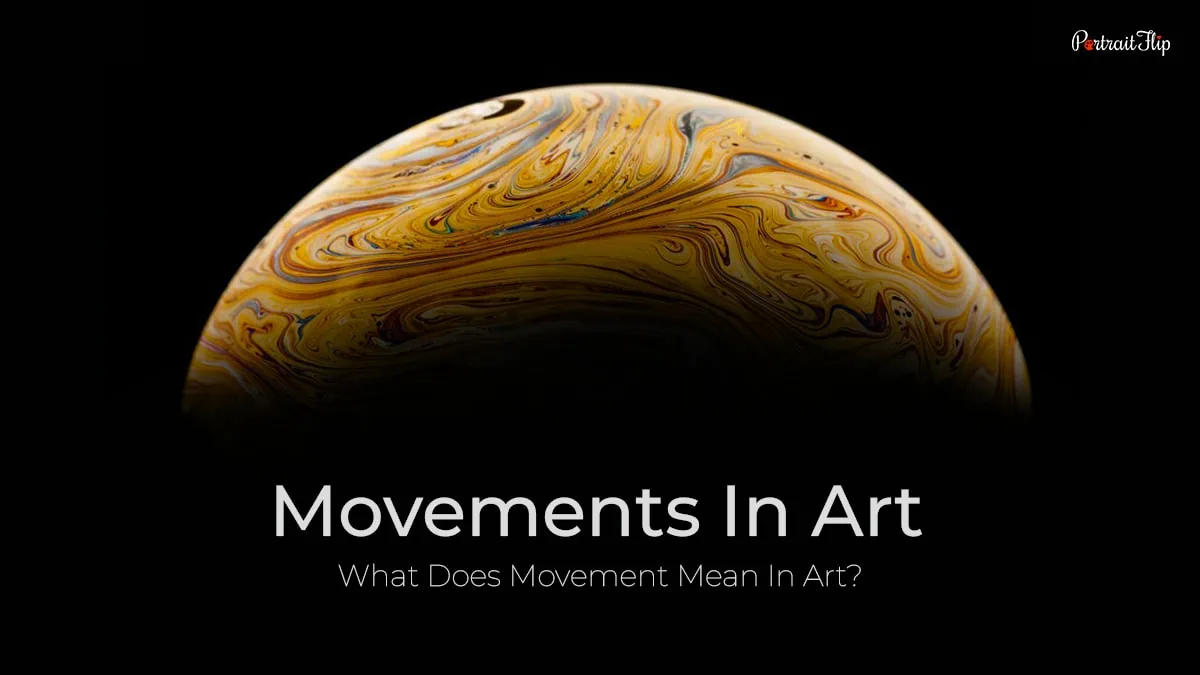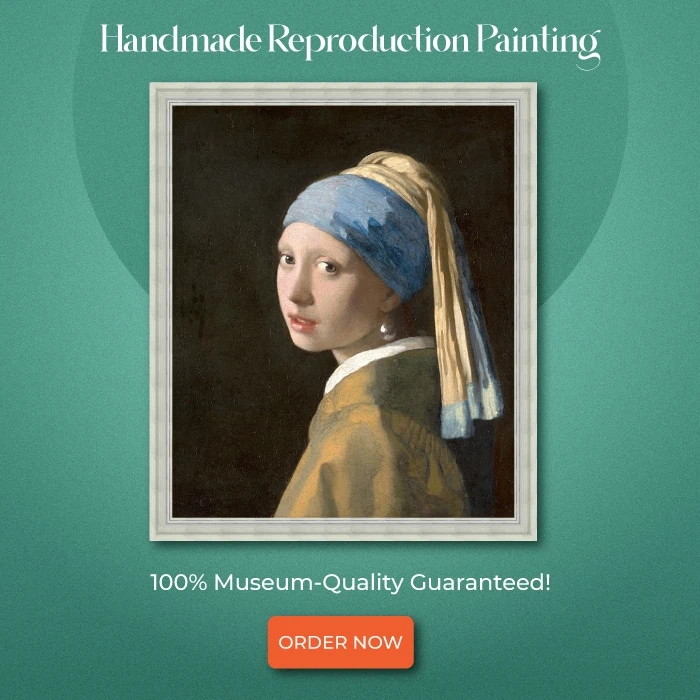Before starting this blog, let me take you on a ride with feelings.
Have you ever come across a painting that adds energy and vibrancy to your life?
An art whose colors and shapes make you wonder a thousand questions.
A texture that creates sensations in your body.
All these feelings are nothing but what movement in art is all about.
This is the answer to all your questions when you witness art.
I can surely be direct with you about what the definition of movement in art is, but that won’t come with a feeling.
You need to experience what the artists around the world had to show to understand the real meaning of the art movements.
Table of contents
What is Movement in Art?
Every painter creates art according to their thoughts.
The color they desire, the shapes they have in mind, the concept that is either inspired or influenced.
All these are defined in just two words “Art Movement.”
The use of colors and techniques while creating a shape or illusion of motion or dynamism is known as movement in art.
Movement is a visual representation of something taking place, just like running or dancing.
Do you know what the best example of movement in art is? Can you guess?
It’s the famous Starry Night by Van Gogh.
To give you a better understanding, watch the video below.
Give yourself 30 seconds to stare at the spiral, and then place your eyes on the painting.
Now you know why it is known as ‘Movement’ in art.
There are also different types of movement in artwork that contribute to the paintings we admire today.
Let’s acknowledge!
Kind of Art Movements
If you are thinking that I’ll be describing the famous Cubism or Surrealism movement, then you are wrong.
Here is something different than usual.
Whether it is movement paintings or movement artists, these types belong to all.
Before exploring the types of movement in art, just remember one thing: it is nothing but a combination of colors, lines, structure, subject, and the repetition of pattern.
So, what are the types of art movements?
a) Physical Movement
Have you ever noticed the subjects that are represented in motion in the artwork?
Like a moving car, trees bend in one direction as if there is a flow of wind, or people dance.
A motion or action taking place by a bodily object is known as physical movement in art.
The lines in the painting help the artist create physical movement.
Again, Vincent Van Gogh forms a pattern in his paintings that brings motion to the picture.
The lines in art can be perceived in diagonal, zigzag, or curved forms.
Different types of motion, like sideways, upwards, or downwards, result in various perspectives and senses of movement.
Line and movement in art can be popularly witnessed in the Pop Art.
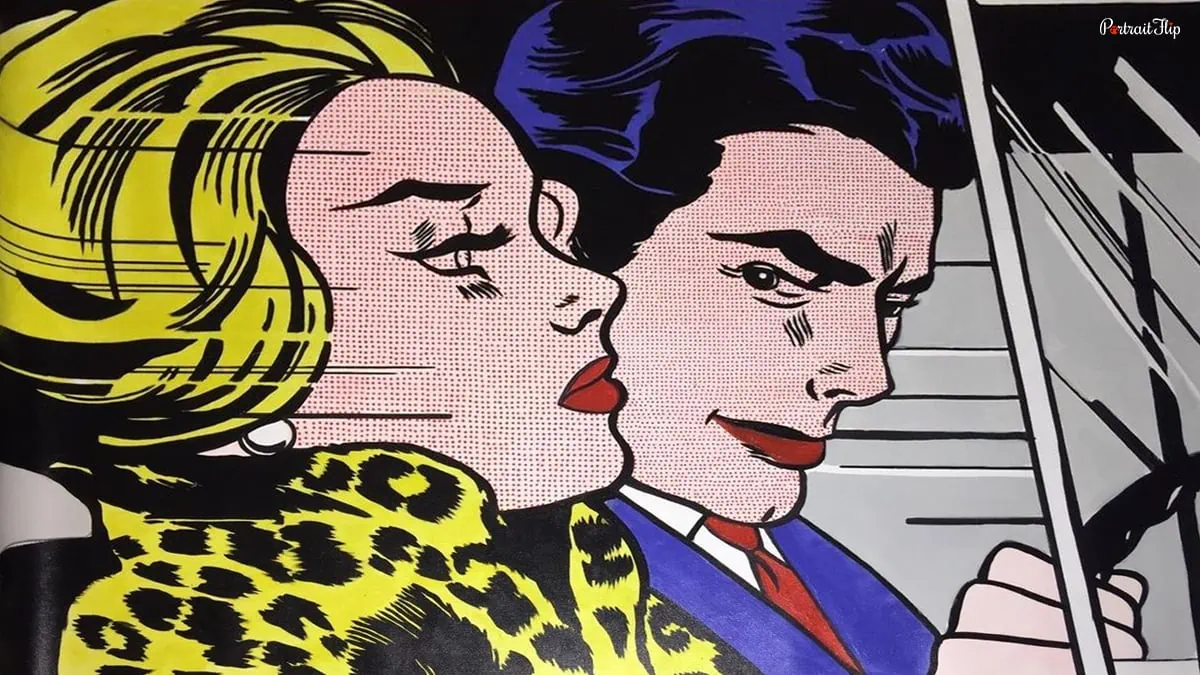
Look at the above image from the famous pop art comic strip In the Car (1963).
The lines depicting the flow of wind and the lady leaning slightly in the backward direction make the viewer think about the car’s speed.
Roy Lichtenstein uses horizontal lines to create movement in his painting.
What a brilliant move!
Another example can be seen in The Dynamism of a Dog on a Leash.
It was produced in 1912 before In the Car took place.
The composition shows a woman walking her dog; however, we only see the dog and woman’s feet moving in a certain direction.
When you walk or move in a certain direction, the motion is fast, blurry, and repeated.
Here we notice the effects of the movement by Giacomo Balla.
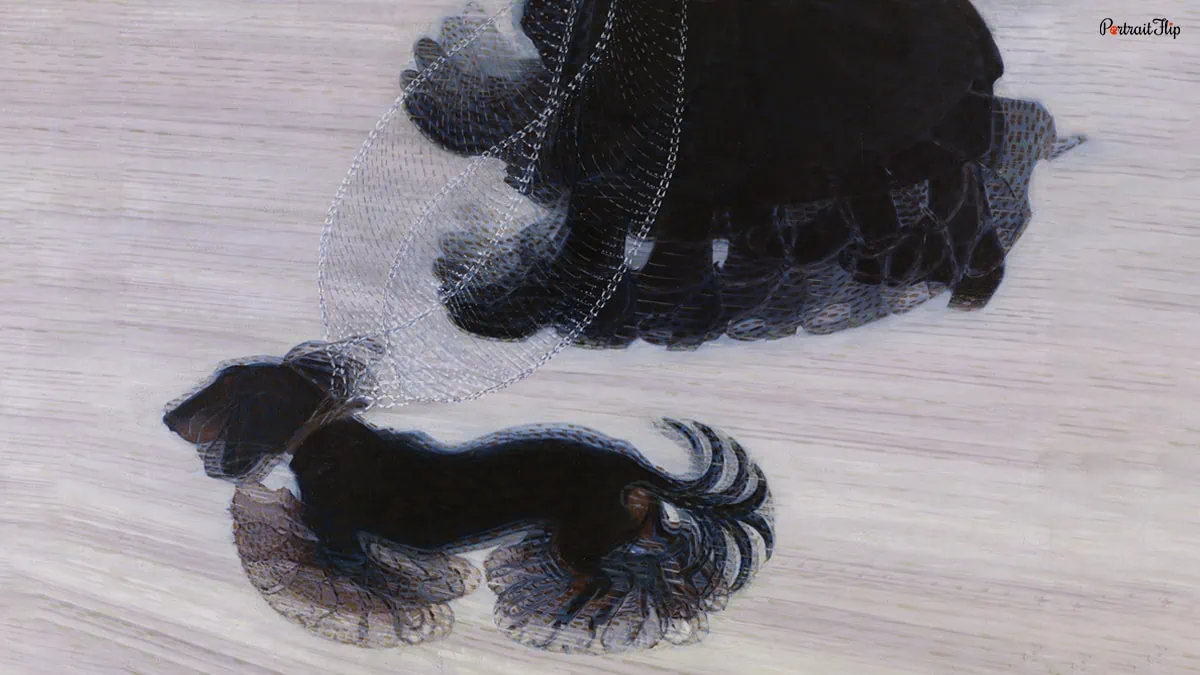
b) Implied Movement in Art
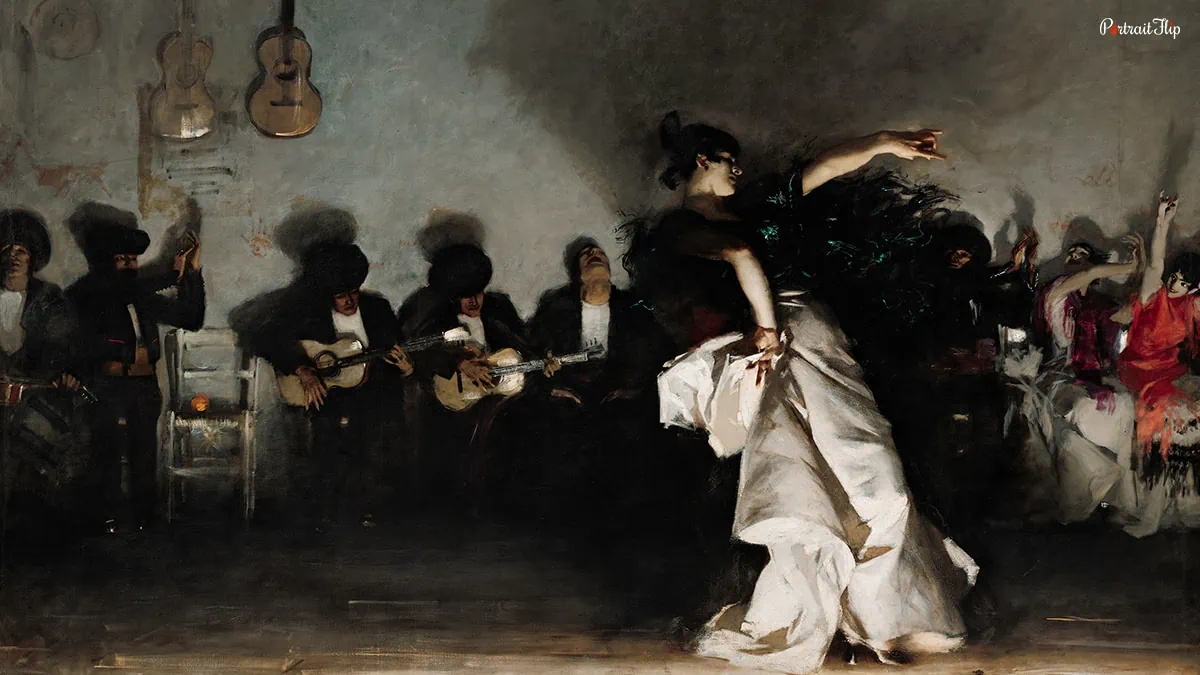
People generally ask, What is an implied movement in art?
Look at the above image carefully.
What did you notice?
A lady that is set in a dancing posture and some musicians who are playing for her, right?
This is what implied movement is.
An action that is about to occur or a posture/position that acts as suggestive in the eyes of the viewer is implied movement.
By witnessing the actions that took place in the art, you create a scenario in your mind.
This generates a feeling in you and adds meaning to the painting.
American artist John Singer Sargent gives us an astounding example of implied movement in the form of El Jaleo (1882), which you can see in the above picture.
If you want some more examples, then The Great Wave off Kanagawa stands next in line.
Katsushika Hokusai created this painting from 1820 to 1831.
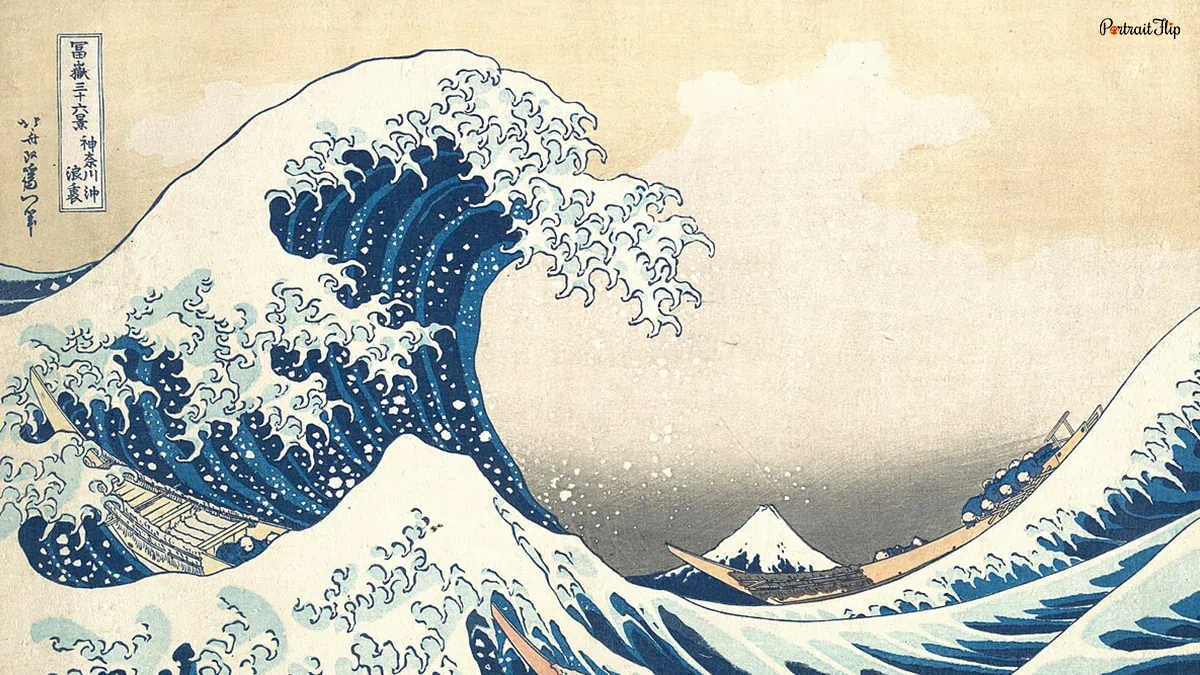
If you observe the painting, you will notice that the large, looming waves are about to crash onto the boats.
The saying that “action speaks louder than words” can be implied in this movement.
The motions define the art of movement with their color, texture of waves, white foam on water, and many more.
c) Guiding or Rhythmic Movement in Art
Guiding simply implies that the movement guides our gaze towards the focal point of the painting.
The lines that show movement in art help you create a story in your mind.
A movement that gives a narrative about the art is known as a guiding or rhythmic movement in art.
The Last Supper by Leonardo da Vinci is a brilliant example of guiding movement.
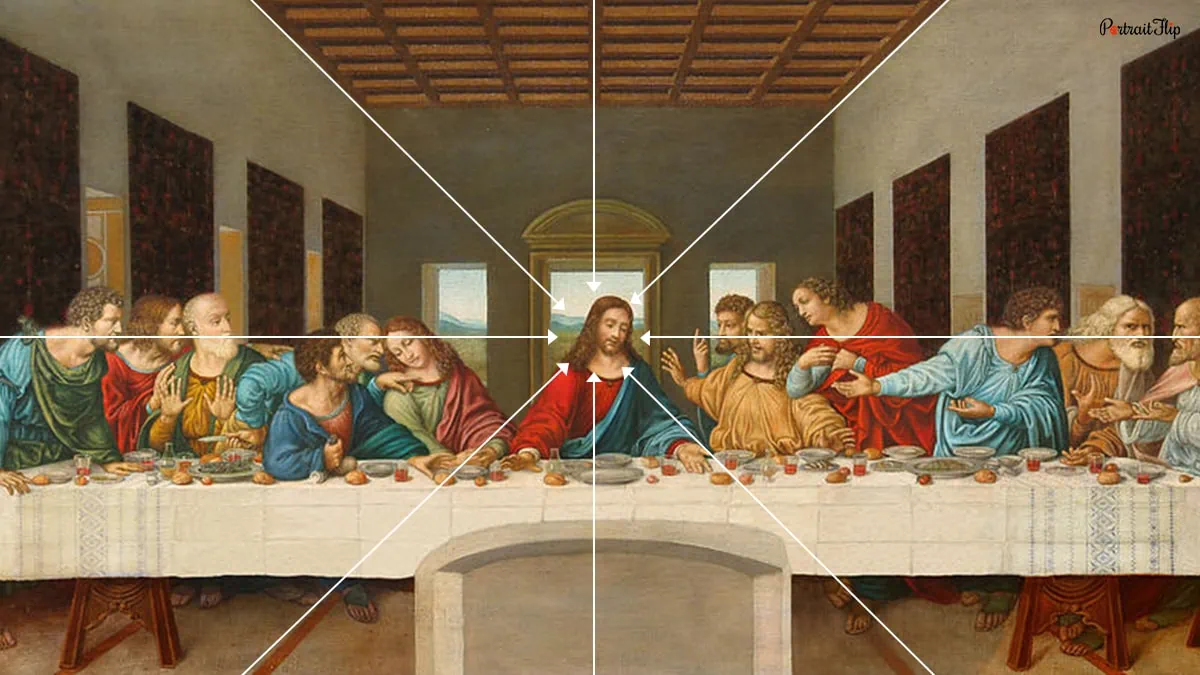
In this framework, Jesus Christ is the central figure, surrounded by his Apostles.
Leonardo used the convergence of lines, movement, and texture in art in order to keep Jesus as his main character.
Look at the above picture; every object is placed in such a way that it depicts Chirst as the focus.
It reveals a tale about what Leonardo wants to say to the audience.
Amazing!
Suggested read: What is Rhythm in Art?
d) Illusion of Movement
Have you been in a mirage before?
How did you feel?
A feeling of hallucination and creating the mindset that the visual in front of your eyes is real, right?
Let me tell you that it’s the subconscious mind that makes us think in a certain way.
The feeling when you notice an optical illusion is the same.
You indulge yourself in the art, which hypnotizes you to have a constant stare.
Op Art style is the illusionist motion art that took place in the mid-1960s.
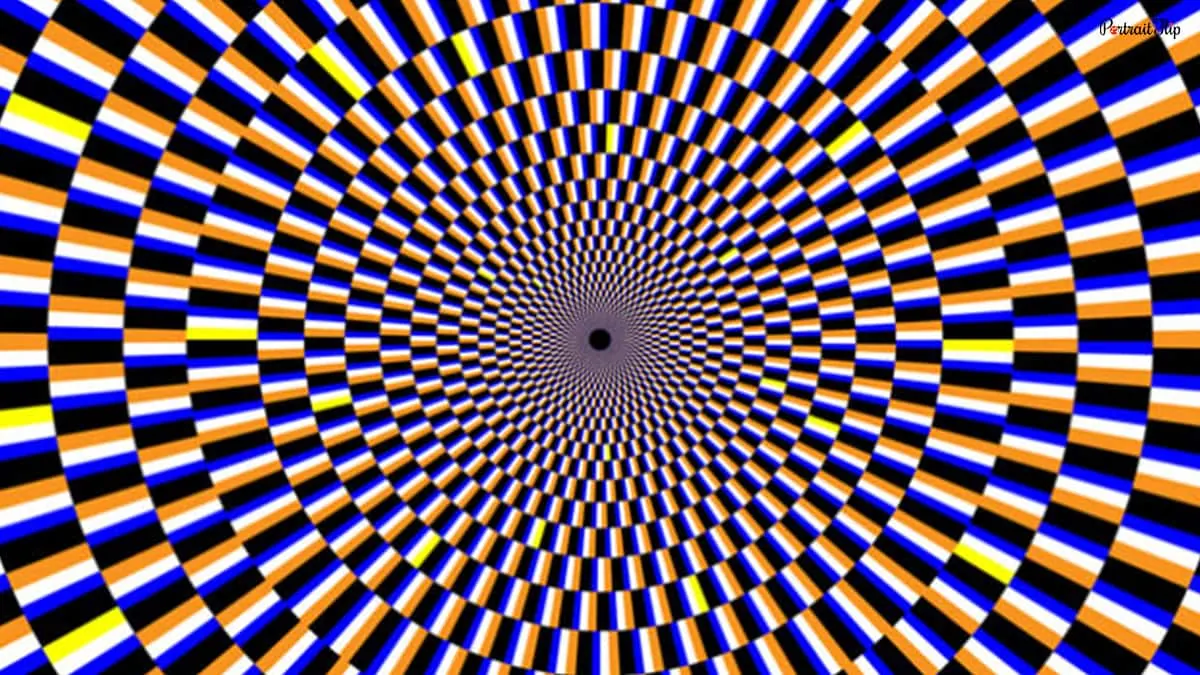
The image above is an example of illusionary movement in art that could be seen not just in monochromatic view but with colors, shapes, and form.
The most famous work was Victor Vasarely’s Zebra (1937), which created a vision in the viewer’s eyes.
Suggested read: Harlem Renaissance Movement
How to Show Movement in Art?
Now you know the types of movements in art.
But how those art movements are shown in the painting has a different story to share.
It involves techniques and, of course, the artist’s vision.
The parts that are important are:
- Colors: The whole concept depends on which shades you opt for.
Bright, dark, spooky, or warm makes the definition of movement in art change.
The calmer the tones, the longer the time period for which people will look at the painting.
- Lines: A question: What types of lines are used to help create a sense of movement in a piece of art?
You can use any type of line, whether it is horizontal or vertical, but consistency of the line is necessary to create a sense in art.
This is the key factor when it comes to movement in art.
It creates an impact on the visual movement in the picture.
Lines lead to a rhythmic movement in art.
- Shapes: Shapes create implied motion in art.
It depends on the shapes shown in the picture to tell a story.
Whether it’s a square, rectangle, or circle, it combines the actions.
- Composition: Another important factor is composition.
When you put the objects together, it seems like they are sharing space.
But when you place them apart, it gives the impression of moving away.
The composition effects the visual and makes the painting interesting.
A Summary of Art Movement in Examples
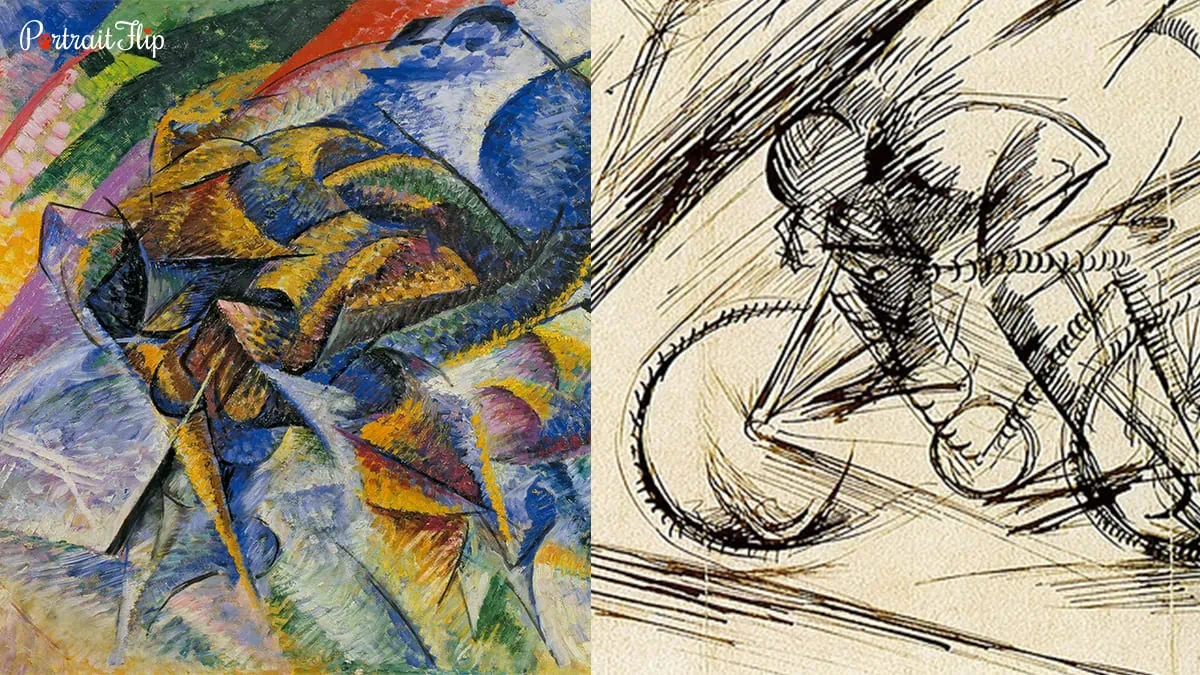
Here is a small brief about movements with examples that summarize the blog in one go.
| Art Movements | Features | Examples |
| Physical Movement | Describes when the objects are in motion. | Dynamism of a Cyclist (1913) by Umberto Boccioni |
| Implied Movement | Suggest when the action is about to occur. | El Jaleo (1882), by John Singer Sargent |
| Illusion Movement | A sense of motion created through illusionary effects. | Vasarely Vega III |
| Guiding Movement | When the viewer is guided along the focus point of the painting, that explains the whole narrative. | The Battle of San Romano (c. 1435–1460) by Paolo Uccello Liberty Leading the People (1830) by Eugene Delacroix |
To Conclude
The art movement started in France in the 19th century.
After that, many famous painters experimented with the movement according to their styles and techniques.
Do you know which 19th-century art movement attempted to show subjects as they appear in daily life?
It was the realism art movement.
Many movements have contributed to the arts in one way or another.
Here, we came to know that movement is a major principle when it comes to art.
Without it, the painting will be boring and won’t appeal.
Don’t you want your walls to describe some movements by themselves?
Hello Art Lovers
How was the blog about Movement in Art?
Did you learn something new from the writing?
Give me your valuable input via comments, which I would love to acknowledge.
Also, if you are into the arts, then you’ll definitely love our Instagram page, which is full of artistic content.
Till then, keep reading and exploring!
FAQs
The best example of an art movement could be witnessed through Vincent Van Gogh’s painting, The Starry Night.
The way the artist creates art, including the designs, gives artists the ability to lead a viewer’s eyes around an art piece.
The art movement took place in France during the 19th century.
Prehistoric, ancient classical, and medieval art were the first art movements.



